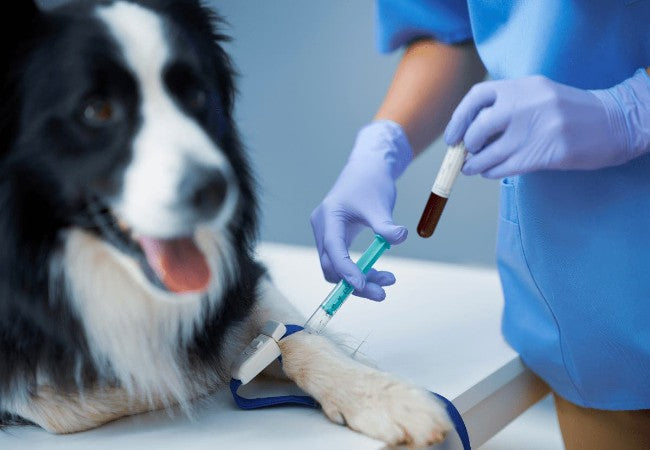Vet Guide to Cyanosis in Dogs 2025 🐶🩺

In this article
Vet Guide to Cyanosis in Dogs 2025🐶🩺
By Dr. Duncan Houston BVSc
Cyanosis is a medical emergency where tissues such as gums, tongue, skin, or mucous membranes turn blue-purple due to low oxygen in the blood, a sign of hypoxemia or poor circulation. 🛑 Central cyanosis affects the whole body (lungs, heart), while peripheral cyanosis affects the extremities (cold or poor circulation).
⚠️ Signs to Watch For
- Blue or purple discoloration of gums, tongue, lips — especially in thin-skinned zones.
- Respiratory distress: panting, coughing, wheezing, noisy breathing (stridor).
- Lethargy, collapse, confusion, and fainting.
- Other signs: muffled heart sounds, exercise intolerance, abdominal usage during breathing.
📍 Common Causes
Central (Whole body)
- Respiratory disease: laryngeal paralysis, collapsed trachea, pneumonia, asthma, lung parasites, smoke inhalation, trauma.
- Cardiac disease: heart failure, congenital shunts, heartworm disease.
- Neurological: brain trauma, stroke, brain tumor—can impair breathing.
- Other causes: anemia, poisoning, hypothermia.
Peripheral (Local areas)
- Poor circulation due to cold exposure or vascular blockages.
📌 Note: Some breeds (Chow Chows, Shar‑Peis) have naturally bluish tongues—monitor for a change from their baseline.
🔬 How We Diagnose It
- Physical exam: Assess mucus membranes, breathing patterns, heart, and extremity temperature.
- Pulse oximetry: Measures blood oxygen saturation—often < 85% in central cyanosis.
- Diagnostics: Bloodwork, chest X-rays, echocardiogram, and advanced imaging depending on suspected cause.
🚑 Emergency Treatment
- Oxygen therapy: Begin immediately to raise tissue oxygenation.
- Supportive care: Fluid therapy, warming, airway assistance, thoracocentesis if fluid in chest.
- Address underlying cause: Surgery, bronchodilators, antibiotics, anti‑heart failure drugs, steroids, or cancer therapy, depending on diagnosis.
📈 Prognosis & Home Monitoring
- The outcome depends on how quickly oxygenation is restored and on the underlying cause.
- In-hospital care includes continuous oxygen, monitoring of vitals, and diagnostics.
- At home, owners should check gum color, breathing rate at rest, and activity levels.
- Brachycephalic breeds (e.g., Bulldogs, Pugs) are at higher risk—elective airway surgery may prevent episodes.
✅ Vet Tips by Dr Duncan Houston BVSc
- 🩺 Blue gums or tongue = emergency—seek immediate vet care.
- 📋 Know your dog’s normal gum color for comparison.
- 🧪 Use pulse oximetry early in unstable dogs.
- 🌬 Start oxygen before running diagnostics.
- 📆 Schedule airway corrective surgery for at-risk brachycephalic breeds.
- 🏠 Educate caregivers to monitor at home for recurrence.
If you notice persistent blue gums, tongue, or breathing difficulty, open the AskAVet.com app for urgent assessment.🐾❤️






